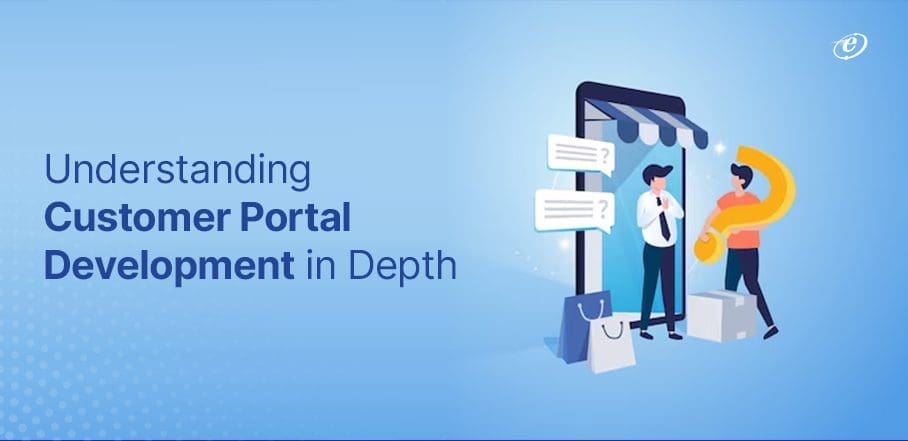
A Comprehensive Guide to Customer Portal Development
Customers are the sole drivers of any company’s economic growth. However, the modern era is competitive and demands businesses to implement innovative and tailor-made solutions.
In addition to static websites, many companies are investing in customer portal development services. Why?
The reason is simple. In a Statista survey, it was evident that customers prefer a brand with a dedicated self-service support portal. In fact, 88% of respondents expected organizations to have such a convenient digital asset.
If you want to capitalize on such a considerable customer base, knowing the custom portal development process is crucial. This blog focuses on customer portals and provides vital details on all the essential aspects.
Understanding Customer Portals: The Concept and Utility
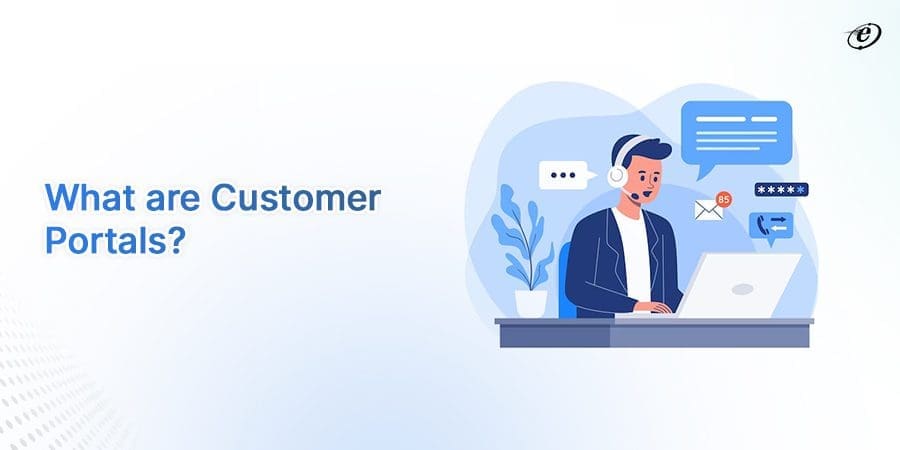
If you are aware of the IT sector, the term ‘web portal development’ must be familiar. This process implies an end-to-end service to create a customized online portal that serves your target audience.
This target audience can be any one of the following:
- Customers
- Employees
- Clients
- Partners
- Vendors
- Associates
Now, customer portals are interfaces that allow your customers to interact with the services of the company. The HubSpot Help Centre and Apple Support Community are prime examples of such web portals.
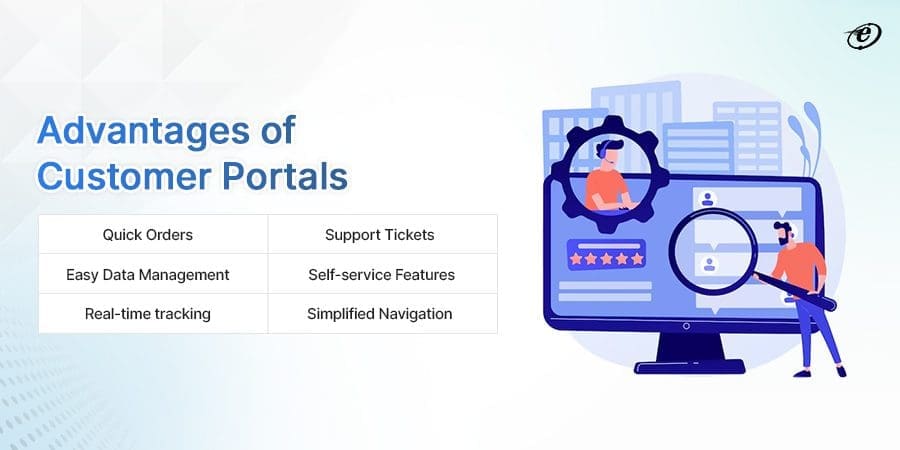
By using a customer or client portal, your target audience can benefit from the following facets:
- Placing orders at a brisk pace
- Exploring relevant products and services
- Managing documents with ease
- Tracking requests or orders
- Connecting with customer support
- Raise support tickets
- Access self-support features
Your Amazon account page is one of the best examples of such an online facility. So, to build a unique identity, many brands approach a reliable customer portal development company.
Understanding the Customer Portal Development Process
If you hire a custom web portal development agency, the experts take care of all the technical elements. Still, as an entrepreneur or decision-maker, you should be aware of the entire client portal development process. This way, it becomes easier to choose a reliable IT vendor and make the right business decisions.
This section contains the basic steps skilled developers follow in the customer portal development phase.
1. Ideation and Identification
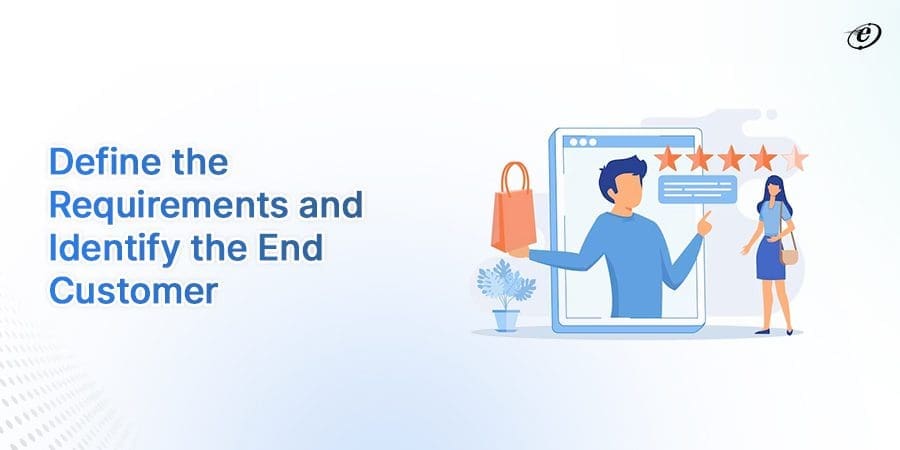
First, the customer portal development process begins with bringing your idea into reality.
For instance, a business might want to develop a customer portal for e-commerce purposes. On the other hand, another company might be looking to create a knowledge base.
Finalizing the idea and defining the target audience is the first step to developing an apt web portal. Next, experts begin by identifying the needs of your business.
These needs define the features of the customer or client portal. Resultantly, you can decide the budget, the strength of the team, and a realistic timeline for deployment of the portal project.
2. Deciding the Team Composition

Customer portal development is a process that needs a dedicated team. This team includes the following professionals:
- Business Analysts
- Project Managers
- Designers
- Developers
- QA Engineers
- Content Writers
- Marketing Executives
The strength and requirement of each profile vary as per your project demand. For instance, you can complete a simple client portal development project without the need for marketing executives. So, this step is crucial to decide the responsibilities of various project members.
3. Initiating the Development Cycle
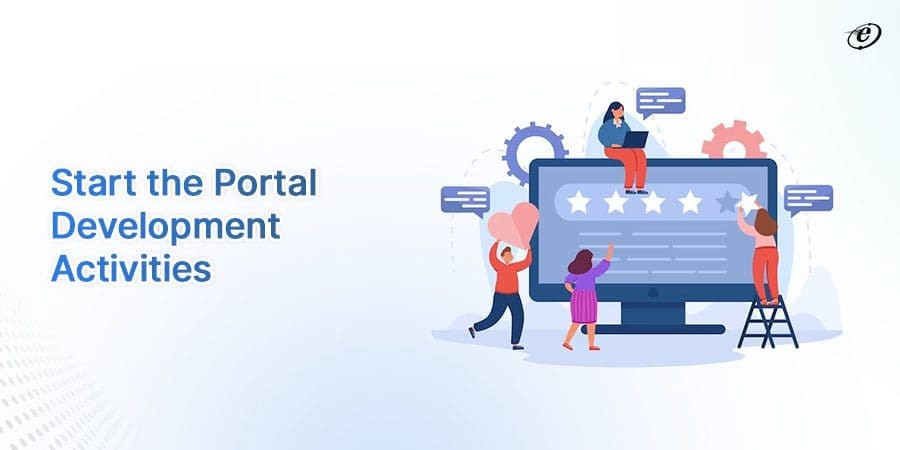
If you decide to outsource custom portal development, a dedicated Project Manager takes care of all the various development stages.
Still, if you are in charge of defining these stages, ensure that you include all the steps below:
- Discovery and market research
- Design and prototyping
- Coding and content creation
- Quality assurance
- Portal testing and bug elimination
Each of the above stages is self-explanatory. Thus, it is vital to note that you will need different professionals to justify each step of customer portal development.
Contact team eLuminous to discuss the technicalities of the development cycle.
4. Final Launch in the Market
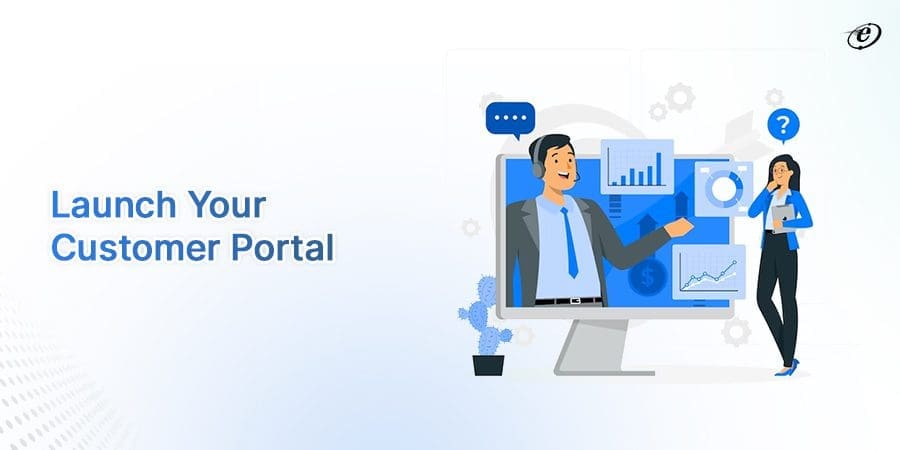
The last step of this custom web portal development process is launching your online facility. For this purpose, you will require a dedicated marketing team who will plan campaigns to promote your customer portal features.
Leverage the following media before launching your product:
- Social media sites like Facebook, Instagram
- Networking platforms like LinkedIn
- Send newsletters to your prospects via email
- Plan online ad campaigns (if necessary)
Overall, the customer portal development process begins with ideation and ends with the final launch.
Customer Portal Development: The Types that You Should Know
Client or customer portals fall into five main categories. This section explains each sub-type in brief.
Types of Customer Portals
| Type of Customer Portal | Brief Explanation |
| Client Collaboration | To assist clients in various activities, documentation, communication, and interaction |
| Online Sales Rooms | For offering a personalized experience to customers about products and provide helpful insights |
| Customer Onboarding Portal | To onboard clients and offer a seamless joining experience |
| Service Hub | For managing requests, orders, processing payments, and providing details on deals, discounts, trending offers |
| Help Desk | To provide support by enabling the raising of support tickets and offer an up-to-date content knowledge base |
You can choose to develop any of the main types depending on your company’s requirements. Remember, customers need to log in to access the various customer portal features. So, as a brand, it is vital to gain credibility as your customers will share details like their email address or contact number for registering on your portal.
Customer Portal Development: The Top Features to Consider
Custom web portal development is a tailor-made service that fulfills the requirements of your business. So, you can leverage various customer portal features to make your product unique.
This section details some popular features developers use during the customer portal development process.
A Simple Sign-in Interface

Customer portal development needs to tick all the crucial aspects. So, this mandatory feature is a must-have in your UI.
Your customers need to have a clear-cut dashboard to sign into your portal. This way, they can enter all the crucial details and save invaluable time. So, your dedicated developer and designer should focus on creating a simple yet appealing sign-in interface.
An Accessible Search Box

Customer portals can have abundant information and content. So, you need to offer simple segregation of the required aspects to the target audience.
You should focus on building an ergonomic search box during custom portal development. In addition, ensure that your search results have proper indexing attributes. This way, customers can get suitable recommendations from the available portal repository.
Informative FAQs

A list of all common queries, along with straightforward answers, can prove vital to enhance the user experience (UX). Since portals aim at improving the self-service experience, FAQs contribute to serving this purpose profoundly.
If a customer cannot navigate the portal for some reason, FAQs can prove to be a great, readily available resource.
Pro tip: If possible, create a list of dynamic and customized FAQs that relate to the concerned customer. You can leverage analytics during the web portal development process to filter out irrelevant results for a specific user.
Virtual AI Assistant or Chatbot

AI can prove vital to facilitate users in making the right decisions. Implementing a Virtual AI Assistant or Chatbot during the customer portal development process can enhance the UX and help retain your customers.
In addition, you can implement ‘guided search’ to assist the users in performing various actions. Have clear consideration of your budget when choosing such features. In most cases, Artificial Intelligence can lead to a comparatively costly custom web portal development service.
Popular Technologies that Developers Use for Customer Portal Development
To develop portals, Software Engineers utilize some of the market’s most trending tools and technologies. The frameworks allow them to install customer portal features that intrigue the end user profoundly.
In this section, you can explore some of the most popular client portal development technologies.
Popular Customer Portal Development Technologies
| Sr. No. | Technology | Brief Information |
| 1 | Node.js | An open-source and cross-platform framework that enables quick code execution. The single-threaded architecture ensures the scalability of the end software or portal |
| 2 | Angular | A client-side framework that has DOM sanitation and is easy to use. This technology is useful in creating innovative customer portals |
| 3 | Vue.js | This popular framework has a JavaScript design and strong, active community support |
| 4 | Ruby on Rails | If your customer portal development process focuses on developing an enticing user experience, this high-speed framework can be a great choice |
| 5 | Flutter | An open-source framework, Flutter has a single codebase and enables developers to create web portals at a brisk pace |
Other popular technologies for building an engaging customer portal are as follows:
- Microsoft 365
- Liferay
- Drupal
- MS Power Apps
- .Net MVC
A professional customer portal development company has a skilled team that can leverage all these platforms. So, you can partner with such agencies and choose suitable technology to create an engaging client portal.
Enhancing Your Customer Portal Development Process: Top Software to Choose
Outsourcing custom portal development to build your online facility can be a good decision. However, even if you choose outsourcing or an offshore service, knowledge of the popular tools is always beneficial.
This section contains a list of handy software to refine customer portal development. So, scroll below to acquaint yourself with some well-known tools and technologies.
Top Client Portal Development Software
| Sr. No. | Name | Logo | Prominent Features/Tools |
| 1 | Zoho Creator |  |
Multi-device compatibility, customized form creation, project management system |
| 2 | Zendesk | 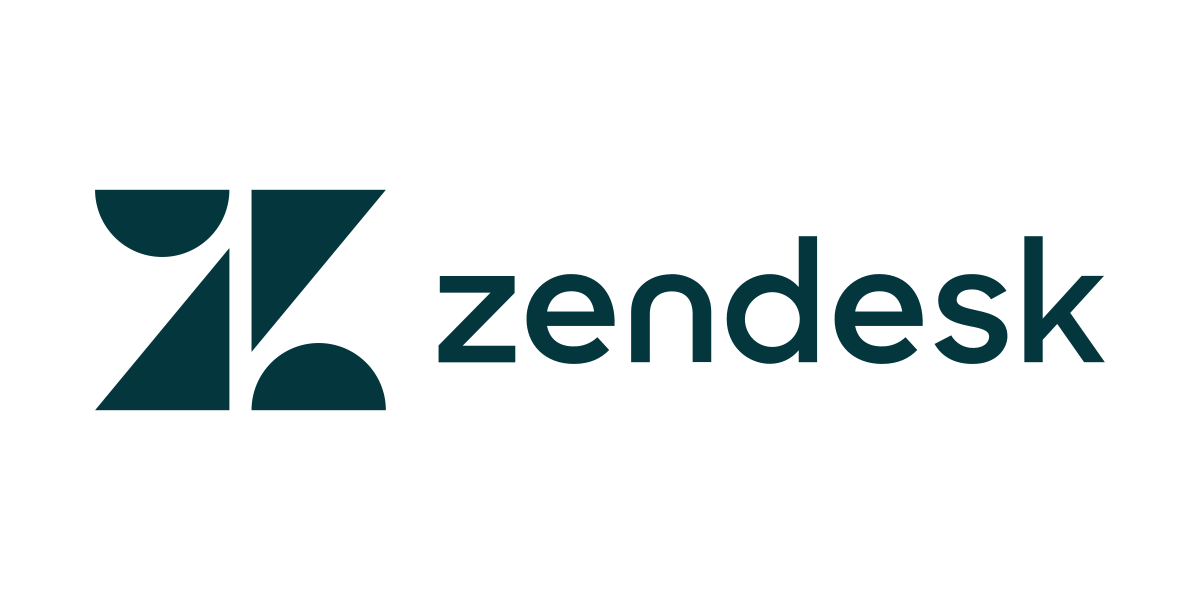 |
Reporting, ticketing system, AI knowledge base, numerous themes |
| 3 | Happyfox |  |
Customer billing, ticket routing, secure file management, customization |
| 4 | Salesforce | 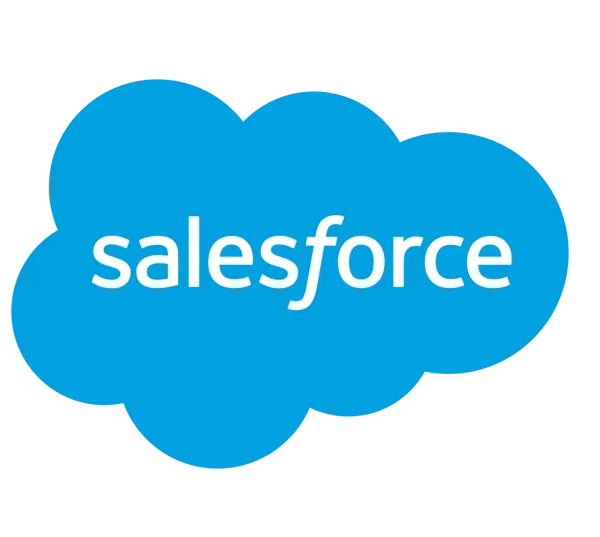 |
Security protocols, invoice management, knowledge base, active community forum |
| 5 | SupportBee |  |
Unique ticketing system, domain mapping, secure file management, customization |
Moreover, choosing such reliable platforms for custom portal development can enhance your end output considerably.
To get the best advice on choosing suitable customer portal software, contact eLuminous Technologies.
The Cost Associated with Customer or Client Portal Development
Designing a customer portal includes several steps, from ideation to final launch. So, you should have a realistic outlook and plan the financial resources accordingly.
The customer portal features and complexity of the platform define the overall cost of the development cycle. Still, you can expect the general cost to begin at the USD 30,000 mark.
In addition, different professionals will charge distinct rates for developing portals. The following table will offer a basic idea of the hourly cost for each profile.
Mean Hourly Rate Range for Customer Portal Development Team Members
| Profile | Average Hourly Rate (USD) |
| UI/UX Designer | 20 – 40 |
| Frontend Developer | 25 – 45 |
| Backend Developer | 25 – 50 |
| Quality Assurance Engineer | 20 – 30 |
| Project Manager | 30 – 50 |
Overall, the client portal development process can have variable rates. The quotation depends on the expertise and experience of the professionals. So, if you hire vetted developers, the cost can reach the upper limit. The quality of work and results, however, will be top-notch.
How to Get the Best Output from Your Customer Portal?
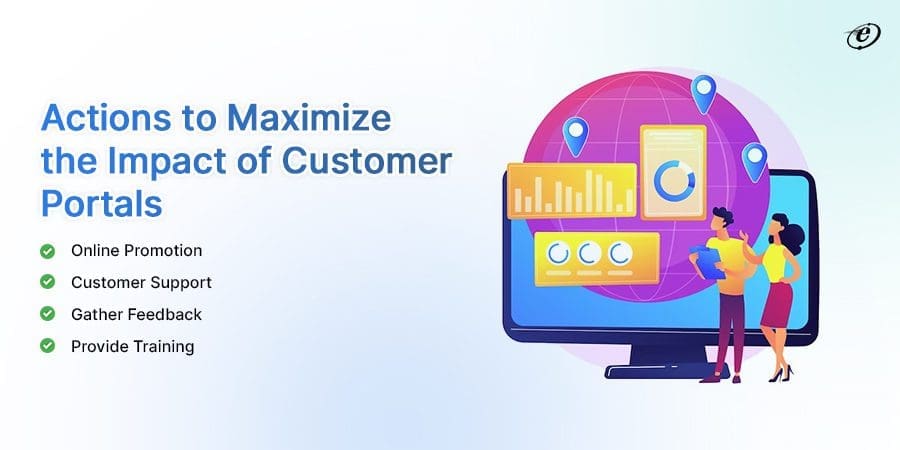
You might build the most engaging customer portal but fail to witness staggering results. Why?
Well, covering the technicalities like Coding, UI/UX design, and Quality Assurance are just one segment of the customer portal development process. As a business, you need to ensure that you focus on other miscellaneous parameters.
Here is a quick look at different auxiliary facets:
- Promote Your Portal: Encourage your target customers to register by promoting the portal on social media. You can even offer special discounts or offers for first-time users
- Offer Multiple Log-in Support: Users in today’s era value their time and convenience. As a result, they prefer signing into a portal using their existing credentials. So, you can provide support to your Google account or integrate social media into the web portal
- Gather Feedback and Respond: Continuous user feedback collection is critical to improving your web portal development process. However, as a new-age brand, you should also acknowledge the reviews of your customers and reply to their opinions
- Provide Training Material: To increase the number of portal subscriptions, you should help new customers with readily available tutorials or guides. This way, you establish yourself as an authentic organization with adequate content on using the web portal fluently
Following these tips can work wonders in attracting customers to use your portal. Ensure you bolster the customer portal development process by implementing sound marketing tactics.
Connect with eLuminous for more guidance on custom web portal development.
To Wrap Up
Customer portal development is the process of creating an intuitive, user-centric, and all-inclusive online facility. This digital asset is different from an official website.
On customer portals, users register and avail themselves of your organization’s facilities. The activities can include downloading PDFs, exploring products and services, buying items, or tracking orders.
Your custom web portal development process should be streamlined to develop a unique customer portal. Focus on aspects like ideation, market research, development, design, testing, and deployment in the overall cycle.
Partnering with a reliable custom portal development firm can prove profitable for your business growth. Such vendors have a team of dedicated professionals who can work on the different stages of project development. So, contact our team and build a distinct customer portal today!
Frequently Asked Questions
1. What are some main elements in customer portal development?
Some significant aspects you should cover in a customer portal are tickets, a secure payment gateway, an order tracking tree, support requests, and form submissions. You can connect with a professional custom portal development vendor to ensure the inclusion of all these facets.
2. Why are customer portals necessary?
Customer portals serve as the bridge between you and your target audience. These online assets prove to be a great source of data accumulation and analysis. In addition, these web portals improve your brand’s reputation and enhance the customer experience considerably.
3. What are the main areas to address through custom web portal development?
You should focus on quality, adding value, and offering exceptional customer service through tailor-made customer portal features. An experienced software development company can guide you in covering these aspects by focusing on coding, design, content, and deployment of such online portals.
4. What are some significant benefits of customer portal development?
By developing customer portals, your organization can offer a personalized service to the end user. Furthermore, these platforms can enhance customer satisfaction, improve engagement, gather crucial data, and drive sales in today’s competitive scene.





